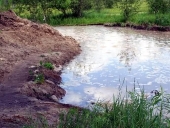ediblecities wrote:
The Australian weather has always been weird, but this time it seems to be even weirder.
While I believe there is no way to secure your garden against extreme events like bushfires or floods, we could brace against too much water or drought.
Unfortunately, I haven't seen any studies, how our weather will go in future and we might have to prepare for too much rain and too little rain and extreme temperatures.
It is comparatively easy to plant in moist conditions or in dry conditions, but in a land were you have both, changing every few years is challenging. I.e do you plant your fruit tress in depressions or on mounds?
Everybody here tells me that swales are good in dry lands, but I am convinced that they have the capacity to hold back too much water, but I didn't try this.
Wetlands around the garden might be good against bushfires.
Any ideas?
Because I live in a desert and extremely dry area in general, I put my fruit trees in depressions with raised sides.
Perhaps you could combine the two and ease your concerns by making your swales your artificial wetlands by design?






